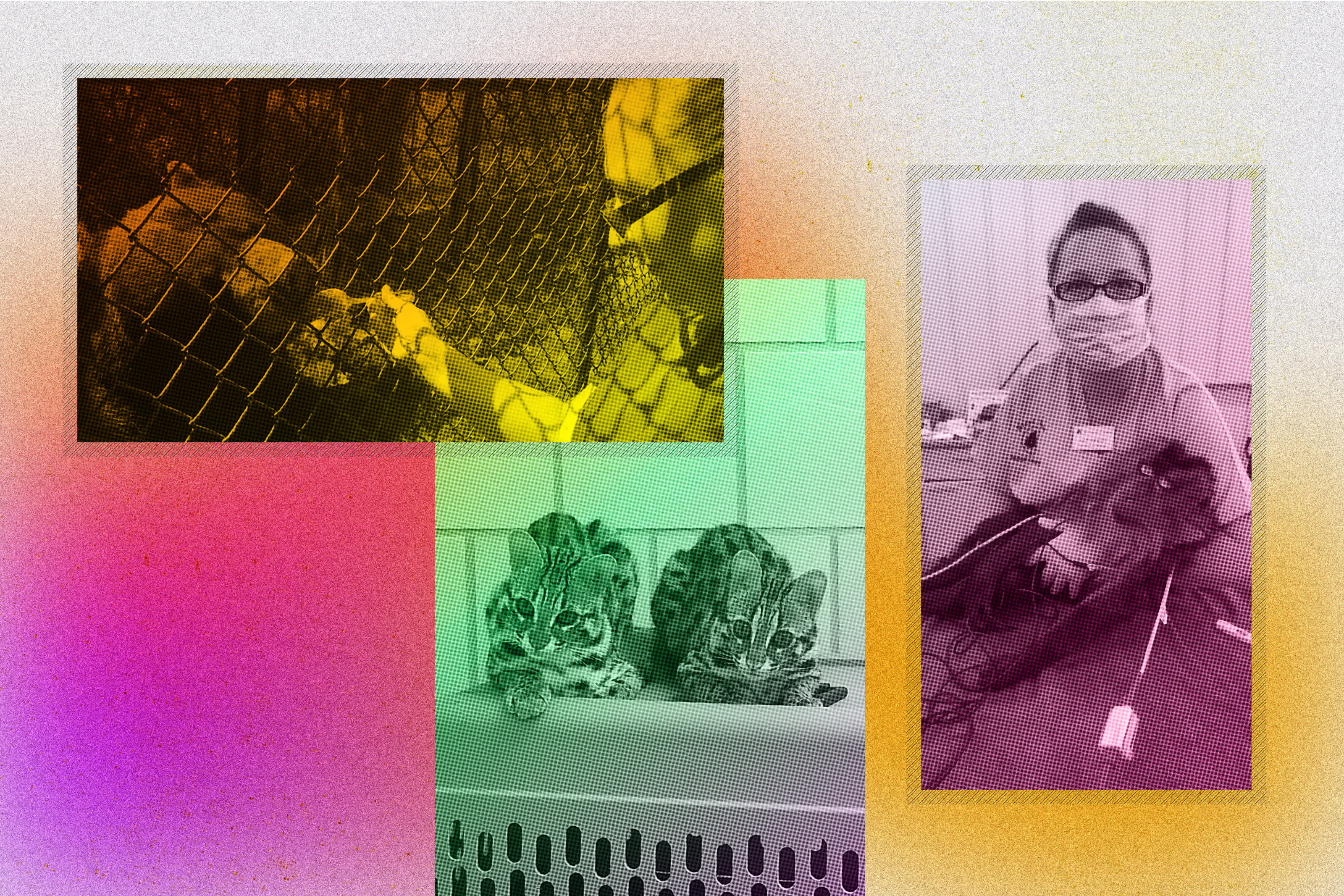Your Dog Will Miss You When You Go Back to Work

"Mom, we need to talk," Elvis says to Houstonia Art Director Monica Fuentes Carroll.
Image: Monica Fuentes Carroll
As Houstonians have spent a great deal of time at home these past few months, many of our four-legged friends have grown accustomed to spending the entire day with their favorite humans. Yes, our pets have become our furry new coworkers, always at the ready to provide some comic relief during a Zoom meeting or comfort when everything gets to be a little too much. But, as Texas is opening back up, many pet owners aren’t sure how their dogs will react when they return to spending the standard eight-hour days in the office.
Some dogs will be almost, well, cat-like about you going back to your pre-pandemic work schedule, but others may have some trouble adjusting (i.e. you may not want to leave any shoes out while you're gone). There are ways to handle the impending changes to your furry baby's "new normal" routine. We spoke with local dog behavior experts veterinarian Dr. Lore Haug and dog trainer Michael Baugh to give us all some guidelines to approaching—and preventing—cases of separation-related distress (SRD) in dogs before returning to your usual schedule.
Recognizing SRD
Haug and Baugh say SRD can be identified through a variety of behaviors, such as inconsolable barking or crying; excessive drooling; pacing; chewing or scratching at doors; destruction; loss of bladder or bowel control; or hyperactive reactions to the owner leaving or returning. If your furry best friend displays one of these behaviors, Baugh, founder of Michael’s Dog’s Behavior Group, encourages pet owners to examine their dog’s past and the current situation before moving forward.
Dogs that have been repeatedly moved between homes and shelters or who were taken from their breeder at a young age can be more likely to develop SRD, he says. Identifying these experiences in your pet’s history can be useful when consulting a veterinarian or professional trainer about SRD, and it can play a big role in determining how to best help your dog.
Additionally, while dogs of all ages can get SRD, certain factors can lead to increased risk, says Haug, owner of Texas Veterinary Behavior Services. Dogs who are newly adopted, or senior dogs who are experiencing more general anxiety (common for pups in their geriatric years) can be more susceptible to developing separation stress.
Before you self-diagnose Spot with SRD, Baugh says owners should consider possible contributing situational factors, especially if the problem behaviors show up out of the blue. Could something like a thunderstorm or doorbell have led to whining?
He suggests setting up a camera before your next trip out, recording your dog’s behavior, and re-watching. If nothing’s wrong, you’ll have great footage to laugh at later, but if your dog is seen pacing or exhibiting escape behaviors (like digging or scratching at doors) without being prompted, you can likely rule out situational distress and look closer into SRD.

Interim Editor-in-Chief Dianna Wray's dogs, Winston (left) and Dolly (right), make regular appearances in Houstonia staff video meetings.
Image: Dianna Wray
Preventing SRD
Even if your dog hasn’t shown symptoms of SRD, it’s never a bad idea to take preventative measures. Fortunately, the most effective way to prevent SRD is one of the easiest.
“The smartest thing to do would be to occasionally leave,” Baugh says. “If your dogs are used to being left at home while you go to work then the best prevention is to keep them well-practiced.” Even if that’s picking up takeout or visiting a park without your dog every once in a while, making sure Fido has alone time is essential when preventing SRD.
If you’re working from home, Baugh suggests alternating between having your dog in the office with you and having them spend time alone elsewhere in the house. As long as you still have quality interactions, playtime, and exercise together, your pup will likely be content with a solitary afternoon nap while you get some work done.
Treating SRD
Haug recommends seeing a veterinarian and/or a certified behavior consultant as soon as your dog shows any kind of stress. If you’ve got your appointment set up, but want more immediate relief, Haug suggests using natural pheromone products such as Adaptil and instituting a consistent, peaceful routine when leaving the house. Also try introducing enrichment toys such as a loaded snuffle mat or a stuffed Kong to keep them occupied while you’re gone.
If your pup is still distressed, try leaving them with a friend, at a daycare, or hiring a pet sitter, Haug advises. It’s crucial to prevent as much stress as possible.
Though it can seem difficult to hire in-person help in light of COVID-19, you’re not in trouble, thanks to the power of technology. “The amazing, cool thing about this pattern of behavior is that nobody has to come to your house to be helpful, it can all be done remotely,” Baugh says.
Whether you set up an appointment with your vet, or reach out to a qualified specialist for an in-person or virtual consultation, seeking immediate treatment for your precious pup’s SRD is essential when prioritizing their comfort and quality of life.




